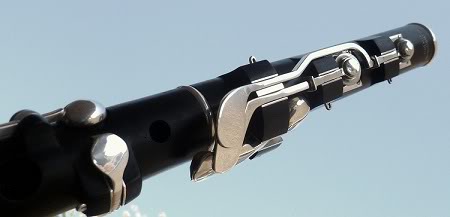Recently I was playing a flute with an embouchure badly chipped on the furthermost edge (from my lip), it was a good head prior to this. It played excellently. I was surprised as despite the fact that I know my technique very well, I wasn't expecting the head to blow as well, expecting some air to go over the top of the opposite edge and therefore be effected by the fault.
I experimented & I stuck a piece of 3mm high blutac to the opposite side of my own head joint emb. & blow and behold, it didn't make the slightest bit of difference. I guess what I'm doing must send most of the air directly into the flute. I also anticipate that the air will circulate down the flute in the opposite direction as from splitting the air column with the furthermost edge as most do. (The head fitted into the tuning slide of both a Rudall Rose and a Prattens, and the results repeated)
Understanding this is important not just to blowers but makers too, even though few players appear to use the technique. I find it's easier to keep a flute in tune and helps temper the flat foot problems of older flutes.
I think I need one of those pyrex flutes and a smoke generator to understand this better.
The still picture was taken after to illustrate and when I was blowing in the video clip the blutac was right on the edge.
http://www.youtube.com/user/holmesway#p ... hC9d3u8hXk
http://i267.photobucket.com/albums/ii28 ... uchure.jpg

Regards
H
